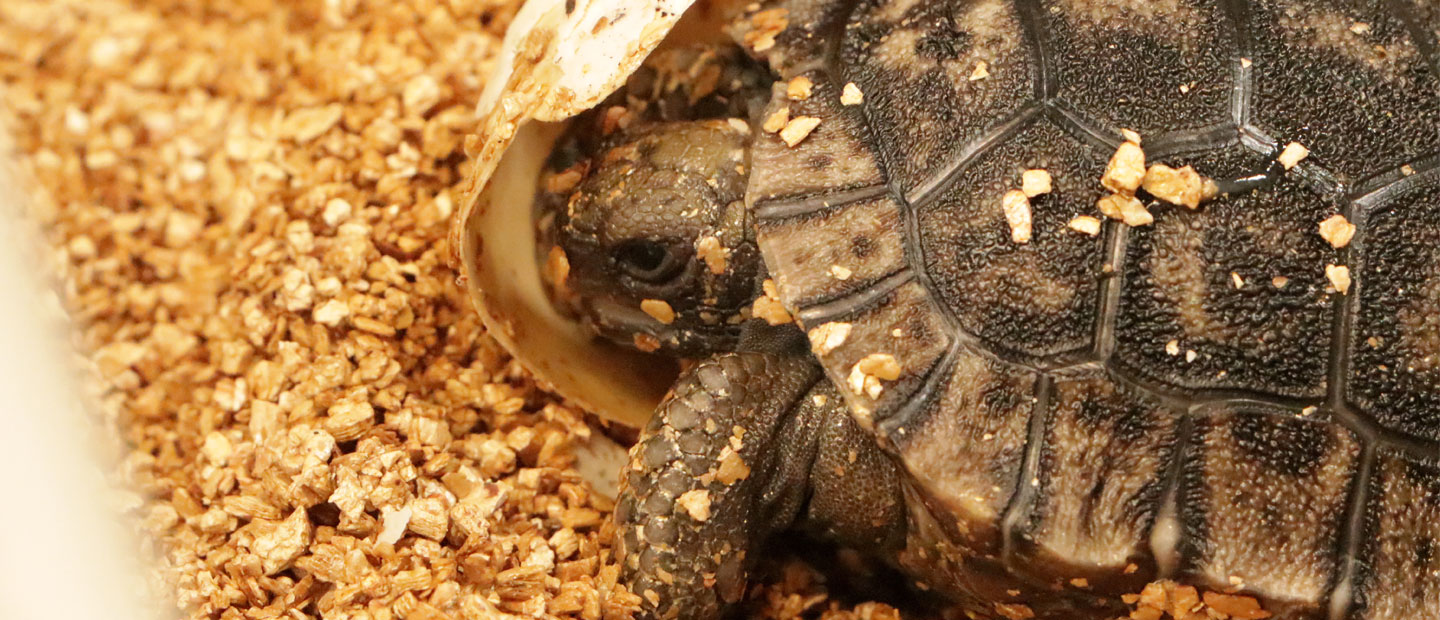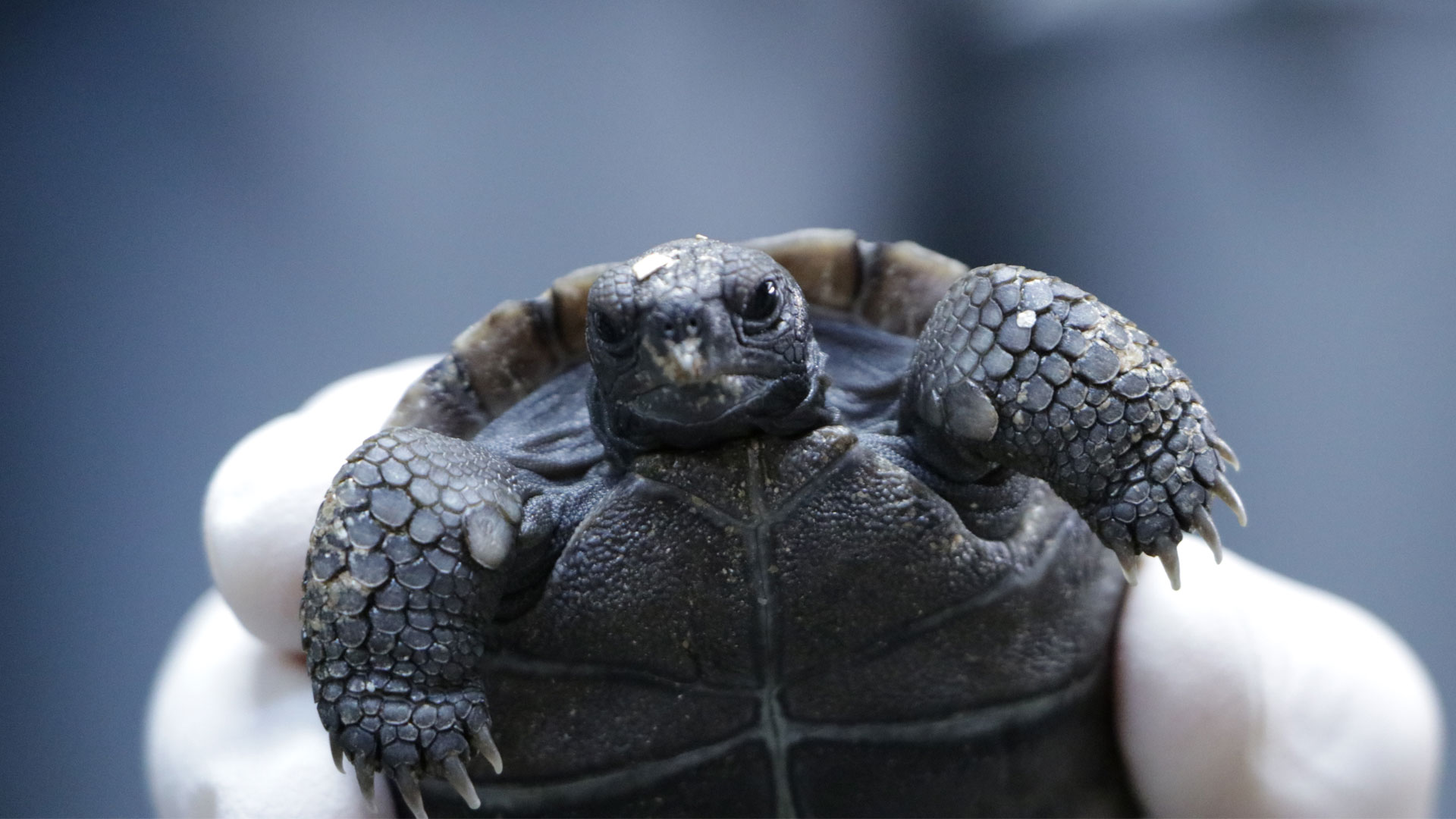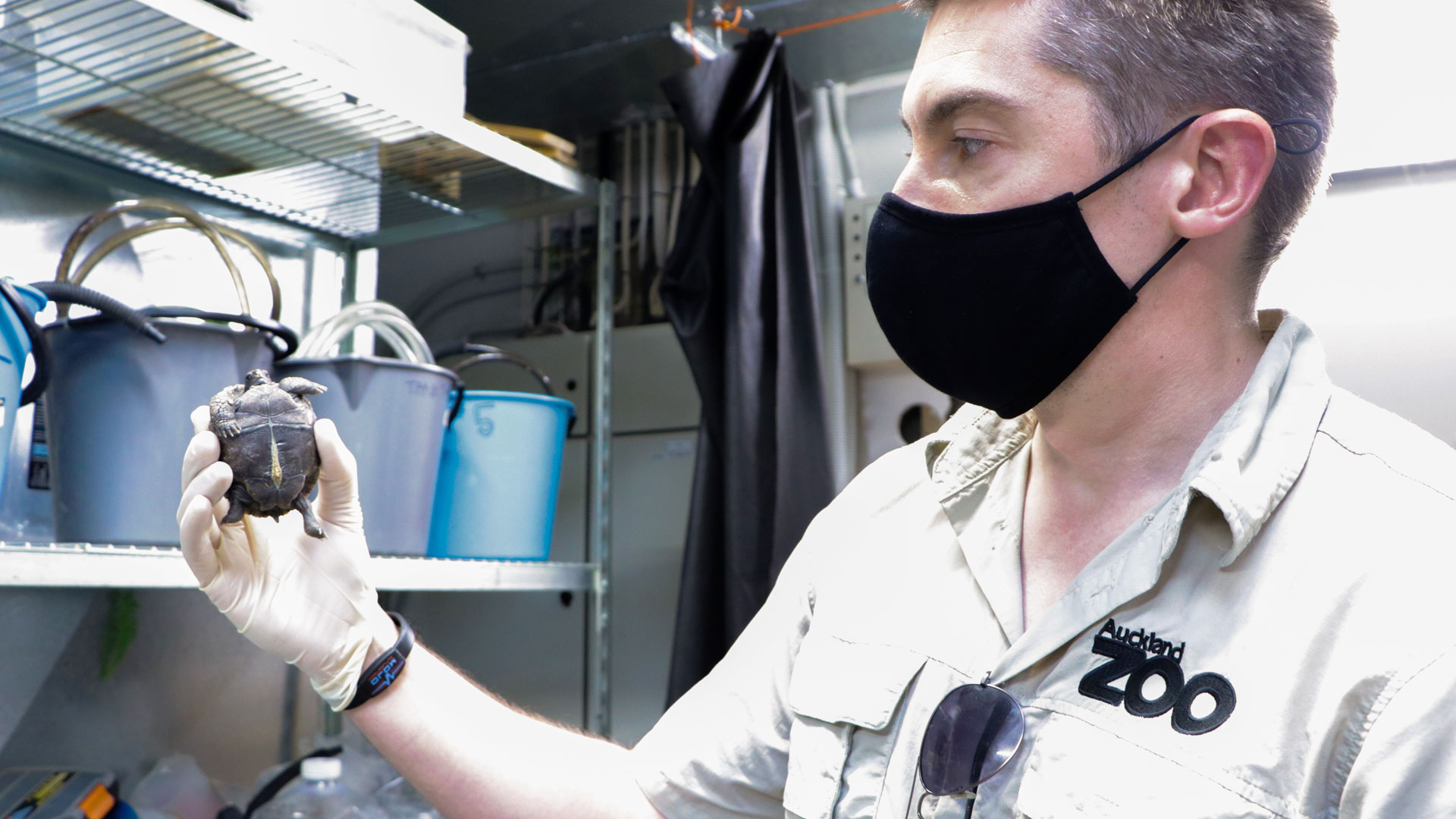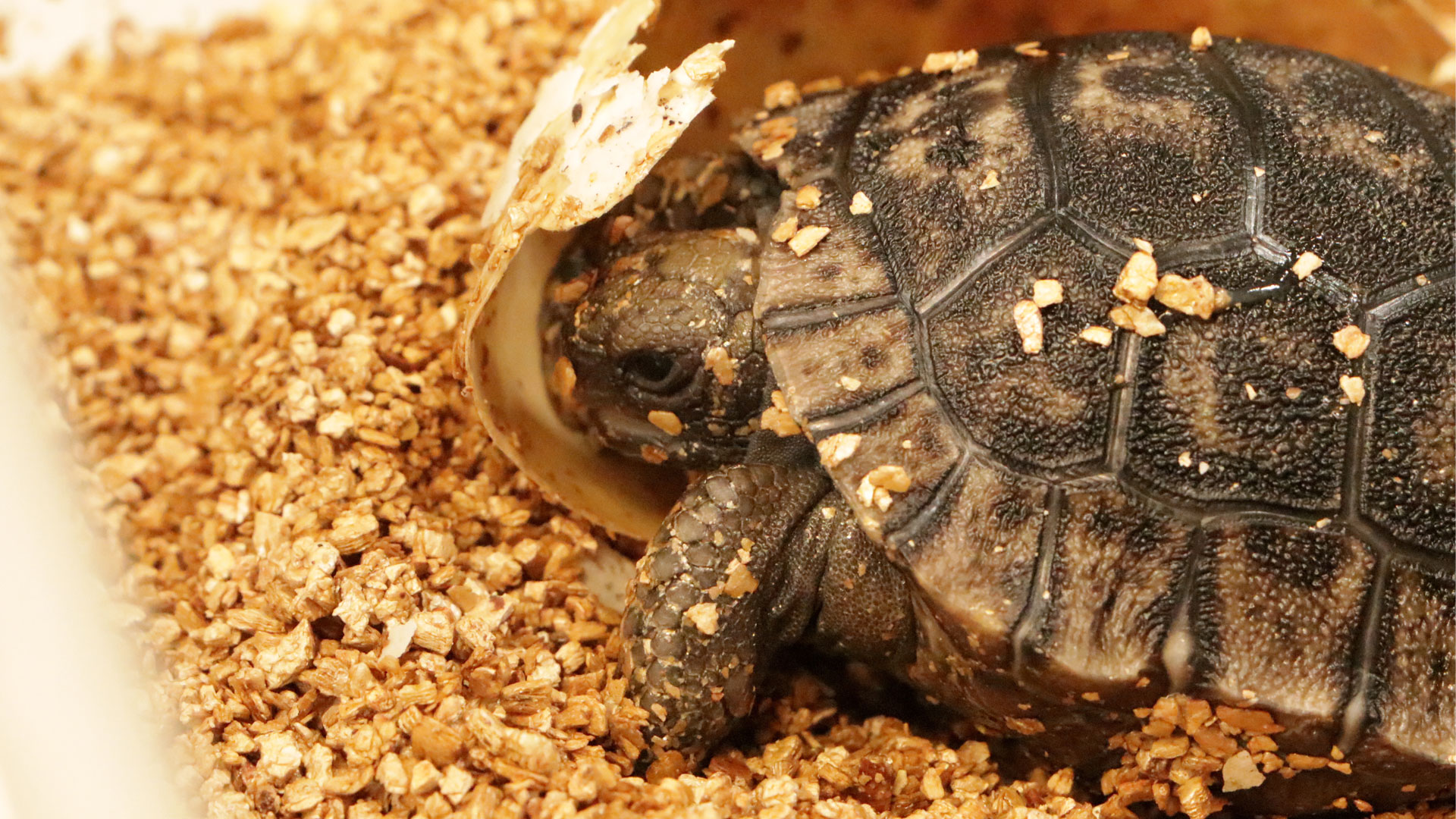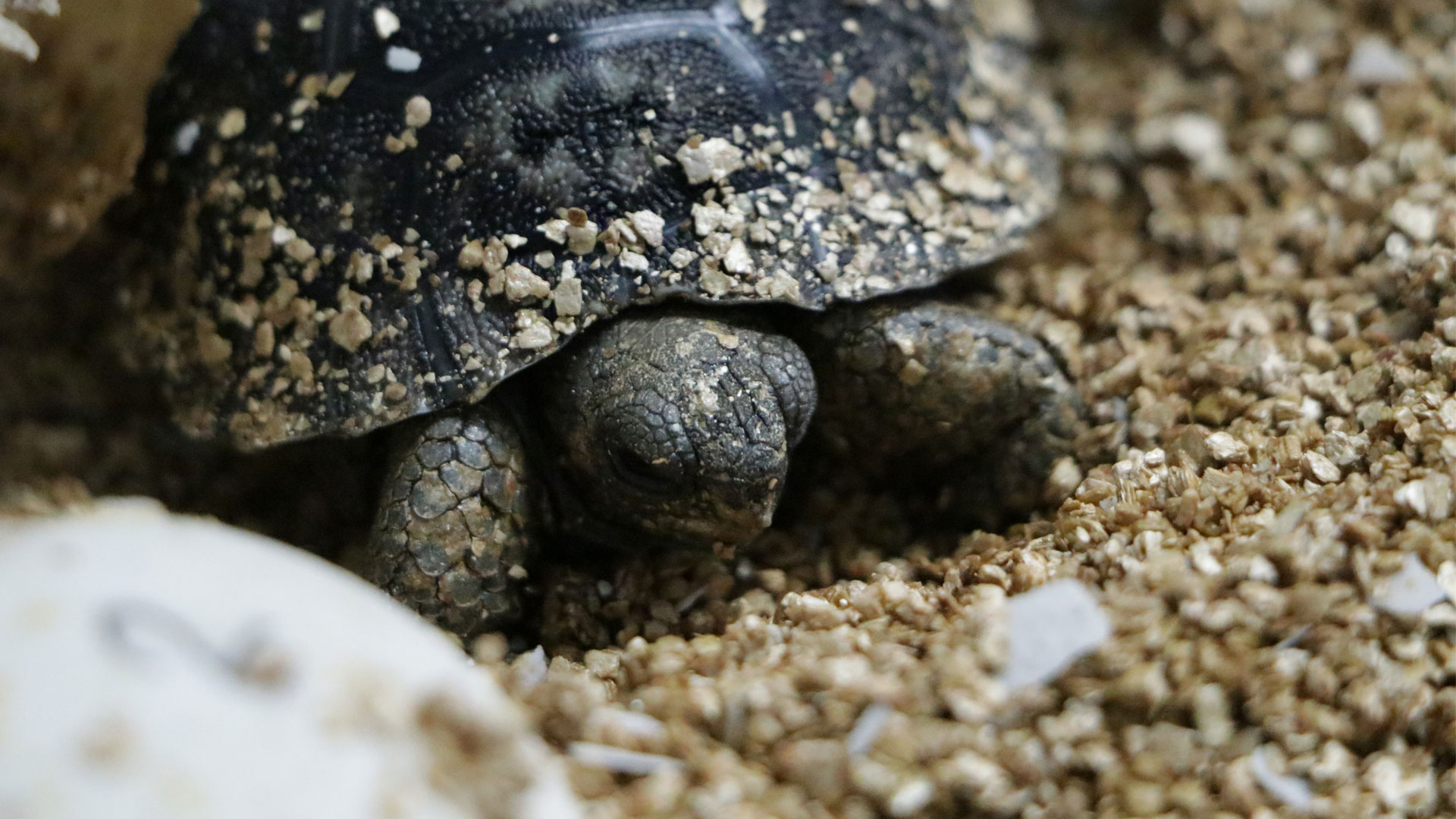The science of care - learnings
Don says he, Nick, Sonja and all the team have gained valuable knowledge through caring for the first four hatchlings – that all going well, along with this fifth arrival, will eventually grow 2,500 – 4,000 times in body mass and could live for over 180 years!
“We know that keeping the substrate (floor) predominantly dry is important for the health of the underside of the shell (or plastron) and it’s important to ensure the substrate is undulating for climbing. Though occasionally juvenile tortoises may find themselves on their backs after misjudging our little ‘hills’, it’s an important life skill to learn to right themselves.”
“In addition to refining heating and lighting technology, which is ongoing, once they start eating – from a diet perspective, we’ve also found chopping up their hay extremely finely is an excellent way to enable them to eat large amounts, which they need to grow.”


